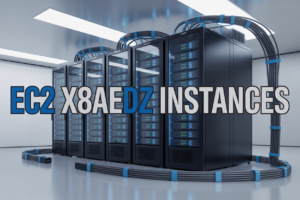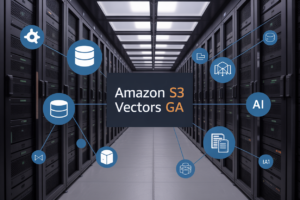You’re staring at a new Kubernetes problem that doesn’t fit any standard resource type. Sound familiar?
Every Kubernetes developer eventually hits that wall where the built-in resources just don’t cut it anymore. Custom Resource Definitions (CRDs) in Kubernetes were literally made for this moment – when you need to extend the platform beyond its factory settings.
I’ve seen teams transform their entire deployment workflows by properly implementing CRDs. They stop fighting against Kubernetes and start making it work exactly how their specific applications need it to.
But here’s what nobody tells you at first: there’s a massive difference between creating a CRD that technically works and designing one that actually makes your life easier. The secret lies in how you structure the schema and validation rules.
Understanding Custom Resource Definitions (CRDs) in Kubernetes
What are CRDs and why they matter for extending Kubernetes
Custom Resource Definitions (CRDs) are Kubernetes’ secret weapon for going beyond what’s built-in. They let you create your own resource types that work just like native ones. Think about it – need something Kubernetes doesn’t offer out-of-the-box? CRDs have you covered, enabling teams to build specialized workflows while keeping everything within the Kubernetes ecosystem.
The evolution from core resources to custom extensions
Remember when Kubernetes only had pods, services, and deployments? Those days are long gone. The platform evolved from rigid core resources to an extensible framework where anything’s possible. This shift wasn’t accidental – the Kubernetes team recognized that no single API could satisfy everyone’s unique operational needs. Now you can teach Kubernetes to manage literally anything, from database instances to complex machine learning pipelines.
How CRDs differ from standard Kubernetes resources
Standard resources come pre-baked into Kubernetes – they’re the factory settings. CRDs? They’re your customizations. While built-in resources have controllers managed by Kubernetes itself, CRDs need you to write the logic that makes them tick. This difference means CRDs offer incredible flexibility but require more work upfront. Your custom resources live in the same API space and follow the same patterns, but you’re responsible for teaching Kubernetes what to do with them.
Real-world use cases where CRDs shine
CRDs absolutely crush it when managing complex, stateful applications. Database operators like the PostgreSQL Operator use CRDs to provision, backup, and upgrade databases without manual intervention. ML platforms leverage them to orchestrate training jobs across clusters. Istio uses CRDs to configure routing rules. Even security teams get in on the action with policy enforcement CRDs. The pattern is clear – whenever you need domain-specific automation within Kubernetes, CRDs are your best friend.
The Anatomy of a Custom Resource Definition
Breaking down the YAML structure of a CRD
Ever stared at a CRD YAML file and felt completely lost? You’re not alone. Custom Resource Definitions have a specific structure that might seem intimidating at first glance. The main sections include apiVersion, kind, metadata, and spec – where the real magic happens. Understanding this hierarchy is your first step to mastering CRDs.
Creating and Deploying Your First CRD
Step-by-step guide to defining your custom resource
Ever tried squeezing a square peg into a round hole? That’s Kubernetes without CRDs. Creating your first custom resource starts with a YAML manifest defining its schema. You’ll specify group, version, names, and validation rules. Think of it as building your own Lego piece that fits perfectly into your Kubernetes infrastructure puzzle.
Validation techniques to prevent errors
Nobody likes debugging at 2 AM because bad data slipped through. Use OpenAPI v3 schema validation to catch errors before they wreak havoc. Add pattern matching for strings, set minimum/maximum values for numbers, and make critical fields required. Smart validation means fewer production fires and more peaceful nights.
Deploying and testing your CRD in a cluster
Time to see your creation in action! Apply your CRD definition with kubectl apply -f mycrd.yaml and watch Kubernetes extend its API. Create test instances of your resource to verify behavior. Use kubectl explain to check documentation generation. When things break (they will), kubectl get and describe become your best debugging friends.
Building Custom Controllers for Your CRDs
The controller pattern in Kubernetes explained
Custom controllers are the real magic behind Kubernetes’ extensibility. They constantly watch for changes to your CRDs and take action when needed. Think of them as tiny robots tirelessly ensuring your custom resources behave exactly as you want them to. The pattern is simple yet powerful: watch, compare, reconcile, repeat.
Creating operators that respond to your custom resources
Ever wished your Kubernetes cluster could automatically handle complex operations? That’s exactly what operators do. They bundle controllers with domain-specific knowledge, letting you automate tasks like database backups or certificate renewals. Build them in Go using client-go or operator-sdk, and suddenly your cluster becomes incredibly smart about your specific workloads.
Reconciliation loops and how they maintain desired state
Reconciliation loops are the heartbeat of Kubernetes controllers. They constantly compare what you want (desired state) with what you have (actual state), then make changes to bring reality in line with your wishes. This endless cycle—observe, analyze, act—ensures your resources always drift back to how you defined them, even when unexpected things happen.
Error handling and recovery strategies
Controllers in the wild face plenty of challenges: API server hiccups, network blips, and resource conflicts. Smart error handling means categorizing failures (transient vs. permanent), implementing backoff strategies, and keeping detailed logs. The best controllers are resilient—they queue failed operations, retry with exponential backoff, and gracefully handle the chaos of distributed systems.
Advanced CRD Patterns and Techniques
Advanced CRD Patterns and Techniques
A. Converting between API versions seamlessly
Kubernetes CRDs evolve over time, just like your application. The conversion webhook feature lets you upgrade between API versions without breaking existing deployments. Think of it as your migration assistant—automatically transforming v1alpha1 resources to v1beta1 or v1 without forcing users to manually update their YAML files. This backward compatibility is critical for production environments where downtime isn’t an option.
B. Implementing webhooks for advanced validation
Webhooks are your CRD’s quality control system. They intercept create/update requests before they hit etcd, checking if values make sense together—not just individually. Want to ensure that replicas=5 only works with specific instance types? A validation webhook handles complex rules your OpenAPI schema can’t express. Plus, they provide helpful error messages guiding users to fix issues immediately, not after deployment fails.
C. Status subresources for reporting operational state
Status subresources separate your CRD’s desired state from what’s actually happening. They answer the crucial question: “Is this thing working correctly?” By splitting status from spec, you prevent accidental overwrites during updates. Controllers update status fields with real-time metrics, conditions, and phase information. This pattern mimics built-in resources like Deployments, giving operators familiar visibility into resource health.
D. Finalizers to handle resource cleanup properly
Finalizers prevent premature deletion of your custom resources. When a user runs kubectl delete, resources with finalizers enter a “terminating” state instead of disappearing instantly. This gives your controller time to clean up external dependencies—like deleting cloud resources, removing config entries, or revoking credentials. Remove the finalizer only after confirming proper cleanup, preventing those frustrating orphaned resources that haunt production environments.
E. Using defaulting mechanisms to simplify user experience
Nobody likes filling out unnecessary YAML fields. Defaulting webhooks automatically populate missing values in your CRD specs, creating a smoother user experience. Users specify only what matters to them, while reasonable defaults handle the rest. This approach reduces errors, shortens manifests, and makes your CRD more approachable—especially for newcomers. Just remember to document those defaults so users aren’t surprised by implicit behavior.
Performance and Scaling Considerations
How CRDs impact etcd and API server load
Custom resources aren’t free lunch for your cluster. Every CR you create adds storage burden to etcd and processing overhead to your API server. Think of etcd as that friend whose closet is already packed—each new custom resource is another jacket they need to squeeze in. Large-scale deployments with thousands of CRs can make your API server sweat harder than a marathon runner.
Strategies for handling large numbers of custom resources
When your custom resources multiply like rabbits, you need a plan. Start with status-only updates to reduce etcd write pressure. Batch processing helps too—instead of updating 500 resources individually, handle them in chunks. And don’t forget finalizers—they’re not just safety nets but performance tools that prevent unnecessary reconciliation loops that would otherwise hammer your API server.
Optimizing controller reconciliation for efficiency
Smart controllers make for happy clusters. Implement work queues with exponential backoff to space out your reconciliation attempts instead of hammering resources that aren’t ready. Use caching aggressively—why ask the API server what you already know? And get selective with your watches; watching everything is like subscribing to every streaming service just to watch one show. Target specific fields and resources to keep your controller lean and mean.
Real-World CRD Success Stories
Case studies of organizations leveraging CRDs
You know how frustrating Kubernetes can be out-of-the-box? Netflix solved that by building their own CRDs to automate complex deployments across global regions. Their custom resources now handle everything from regional failover to capacity planning—stuff that would’ve required mountains of YAML and custom scripts before. Talk about working smarter.
Popular open-source operators built on CRDs
The Prometheus Operator changed the monitoring game completely. Instead of wrestling with configuration files and deployment strategies, you just create a “Prometheus” resource and the operator handles everything else. Same story with Cert-Manager—SSL certificate hell? Gone. One CustomResource later and your certs are automatically provisioned, renewed, and distributed across your cluster.
Transformative workflows enabled by custom resources
GitOps workflows got supercharged when Flux and ArgoCD built custom resources for deployment tracking. Now your git commits automatically sync to cluster state without human intervention. Database operators like PostgreSQL and MongoDB operators transformed how teams handle stateful applications—automated backups, upgrades, and replication with simple CRD declarations instead of 3 AM panic sessions when your database cluster fails.
Lessons learned from production implementations
Most teams crash and burn by creating too many custom fields instead of reusing Kubernetes patterns. The successful ones keep CRDs focused on business logic while inheriting Kubernetes primitives. Version your CRDs properly from day one—migration headaches are real. And please, please document your custom resources thoroughly unless you enjoy 2 AM calls from confused teammates trying to understand your “brilliant” custom workflow.
Custom Resource Definitions (CRDs) represent a powerful extension mechanism in Kubernetes, enabling teams to develop tailored workflows and specialized controllers for their unique operational needs. By understanding the structure of CRDs, learning how to create and deploy them, and building custom controllers, you can extend Kubernetes’ native capabilities in ways that align perfectly with your organization’s requirements. The advanced patterns, performance considerations, and real-world success stories we’ve explored demonstrate how CRDs have transformed infrastructure management for countless organizations.
As you embark on your own CRD journey, remember that this technology bridges the gap between Kubernetes’ standardized approach and your specific operational challenges. Whether you’re implementing custom validation logic, automating complex deployments, or enabling entirely new infrastructure paradigms, CRDs provide the foundation you need. Start small with a targeted use case, apply the principles outlined in this guide, and gradually expand your custom resource ecosystem as your confidence and expertise grow. Your path to more efficient, consistent, and automated Kubernetes operations begins with that first custom resource.



















